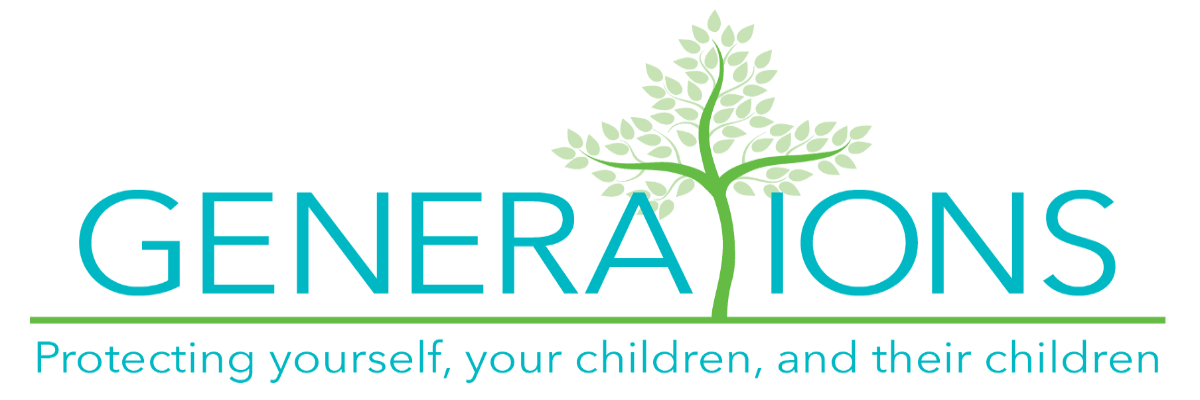 Protecting Yourself Protects Future Generations
Protecting Yourself Protects Future Generations
Did you know that parents’ exposure to certain chemicals before conception and during fetal development can impact the risk of diseases throughout their own, their children and even their grandchildren’s lives?
Understanding Endocrine Disrupting Chemicals
The endocrine system is a set of organs and glands that produce and release hormones. These hormones act as chemical messengers, regulating and coordinating various functions in our body, including metabolism, reproduction, growth, and mood. However, certain chemicals known as endocrine disrupting chemicals (EDCs) can interfere with the normal functioning of our endocrine system.
EDCs can enter our body through ingestion (swallowing), skin (absorbing), and lungs (breathing). They can be found in everyday products such as plastics, cosmetics, and household cleaning products. For example, when we heat food in plastic containers in the microwave, EDCs can get into the food and enter our body when we eat it. Similarly, when we use cosmetics with harmful ingredients, they can be absorbed through the skin. Moreover, by breathing in toxic chemicals present in cleaning products, we allow them to enter our body through the lungs.
It is important to understand that endocrine disruptors are not limited to products. Everyday activities like dusting our house, food preparation, or handling paper receipts can also expose us to these harmful chemicals. Furthermore, it is important to note that a single source of exposure can enter the body through multiple pathways, making a potentially larger impact.
Let’s consider the role of dust in this context. One way EDCs become attached to dust is by coming off of furniture and electronics treated with flame retardants. During our regular cleaning routines, dust particles containing EDCs can enter the air. Breathing in this dust can allow these harmful chemicals to enter our bodies through the lungs. Additionally, when we touch surfaces or objects covered with dust, endocrine disruptive chemicals can be absorbed through the skin or ingested when we touch our mouths or consume food without washing our hands. These daily exposures to EDCs increase the risk of developing diseases throughout our lives, such as childhood leukemia, obesity, and breast cancer.
Researchers have found that exposure to EDCs can impact the person exposed, as well as their children and sometimes even grandchildren through sperm, in utero, or egg development. Because eggs are created during fetal development, when a person is pregnant with a female fetus, there are potentially three generations directly exposed! Learn more about the impact of EDCs on multiple generations.
There are many EDCs in our environment that are known or suspected to harm our health. While many people think that the U.S. regulates harmful chemicals to keep them out of our products, that is often not the case. Most older chemicals have never had to prove they are safe and manufacturers want to avoid the cost of testing. Learn more about the limits of regulation in the US.
The Story of Generations
Generations is an educational campaign created by the Breast Cancer and the Environment Across Generations Community Advisors, a group of Child Health and Development Studies(CHDS) participants led by Zero Breast Cancer staff and CHDS researchers. Learn about the study that inspired this project.
Our goal is to educate young adults and other community members about the multi-generational impact of EDCs and inspire simple actions that we can take to reduce exposure. Visit sections of our website to learn more about things we can do to reduce exposure from personal care products, dust, dirt and cleaning products, pesticides, food preparation, drink and food containers, and receipts.
This project focuses on things we can do as individuals. Working together, we can have an even greater impact. Learn more about current actions you can take. Check out opportunities to sign petitions, call or write your elected representatives or vote with your pocketbook through organizations like Center for Environmental Health, Toxic-Free Future, Environmental Working Group, and Women’s Voices for the Earth.

